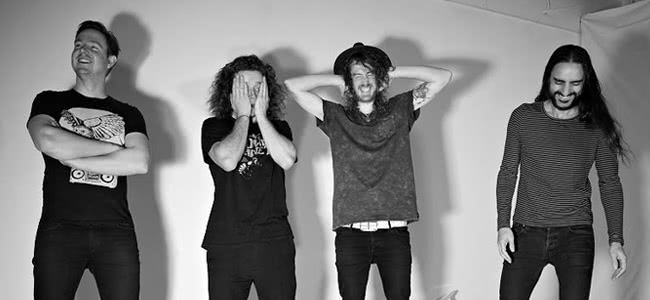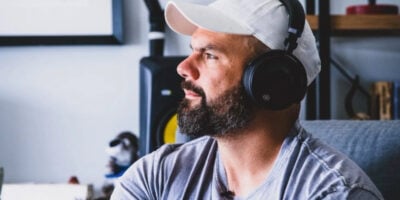Putting your own album together entirely off your own back may seem like a daunting task for a lot of bands, especially emerging acts, but there are also benefits to shaping your own release entirely from the ground up.
Melbourne blues-rock outfit Smoke Stack Rhino did exactly that, self-funding their upcoming debut record and everything that goes along with it, so we spoke to them about the whole process and how to make your next album all on your own.
Having just put the finishing touches on the record, the’ll be launching the second single this Saturday at Ding Dong with support from rockers Tame The Sun and neo-soul outfit Mayfield. After putting in so much work, it’ll be a launch well-earned.
Deciding To Self-Fund
Self-funding the album happened naturally after our vocalist Dave joined the band last year.
We didn’t really sit down and say ‘let’s self-fund our own record’; the fact was that we had two grand in the band kitty from performing while we were looking for a singer, and thought ‘okay, we can do an EP with this amount, but why not put together a full length record?’
From there it was a question of where the rest of the money would come from.
Finding The Cash
We were reluctant to dip into our own incomes, so gigs seemed the logical option. We ended up playing around 50 shows. These included a month-long residency, some great festival slots, an engagement party and a wedding.
All of them were original shows. Not that there’s anything wrong with cover bands (the Melbourne Symphony Orchestra is a bloody good cover band) but there’s a feeling of accomplishment in knowing the funds were generated through something we hard worked for and created as a band.
I’ve spoken to a few other bands, and it seems that unsigned bands will usually fund the recording, production and publicity costs largely from their day jobs, with additional support from the band’s kitty.
The Benefits
For us, self-funding allowed us artistic and financial control. We were able to create, record, produce and promote largely on our own terms. The downside to this was that there have been times where we have needed strategic direction or management to help with decisions.
There are some bands that are totally covered by their label or will split costs with the label. Maybe that’s the upside of self-funding; you get to see 70-80% of the profits after distribution costs and maintain artistic and creative freedom. The difficulty is finding the money to do it.
The Challenges?
Chasing all those gigs was the main challenge, along with balancing the benefits of playing with the dangers of playing too much.
The biggest funding problem occurred after we had finished the initial 12 studio days booked in the studio and needed more time. The extra days really helped Beau and I to polish and produce the record, but it meant the band would have to find the extra funds from somewhere. We thought about crowd-funding, but didn’t like the thought of asking people for money. The result was that we had to play more shows, and the record release date was delayed and the artwork and publicity was affected.
If Smoke Stack could have engineered a quality studio sound ourselves, we would have. Part of the reason a band like King Gizzard and the Lizard Wizard puts out so many albums is because they’re a DIY band, and Palace of the King also record their own stuff.
In hindsight, we would have put more into our artwork and publicity. While the album cost $10K to record and master, ideally we would have also set funds aside for extensive PR to launch the album at the end of October.
Advice For Other Bands?
Do it! Go for an album and put together a plan for funding it. People don’t buy singles and EPs aren’t long enough. I think the key is to identify what you can do within the band, and what you need outside help with.
Set goals, and be organised. The only person we spoke to beforehand about self-funding was Beau McKee who recorded our album. Beau was one of the founding members of Closure In Moscow, and having been through the process of recording an album with them, the main thing he said was to be organised before heading in to the studio, and to identify clear aims for the record. We didn’t really have either!
Along with crowd-funding and playing shows to source funds, there are also online options to save money. YouTube is great for Photoshop tutorials to design artwork and flyers, and Bandcamp seems to offer a good digital deal for artists.
Digital downloads are a way around the production costs for a CD or vinyl, but a lot of people still want the physical album in their hands, and still want to buy merch at gigs… Hopefully we’ll get a few sales at our single launch this Saturday at Ding Dong!

































